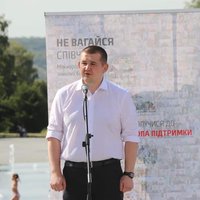The Russian authorities made an early start. Last September, president Vladimir Putin redrew the political map by announcing the annexation of the four partially occupied Ukrainian regions. Various Russian political parties, namely Just Russia and the Russian Communist Party, started to operate in Luhansk and Donetsk.
And months later, in December, deputies of the ‘People’s Councils’ in Luhansk and Donetsk adopted new laws that allowed them to elect the heads of the ‘people’s republics’, rather than holding a public vote. Similar changes were adopted by the occupation administrations of the Zaporizhzhia and Kherson oblasts.
More short-term measures have also been introduced. Russia’s election commission has permitted ‘early voting’ in the occupied territories, which essentially means residents can vote over the course of a whole week – boosting the turnout. Polling places are many and varied, including a bus stop, the courtyard of an apartment building, as well as voters’ doorsteps via home visits by election commission representatives accompanied by police or the Russian national guard.
Reports of residents being detained for failing to cast their ballot are designed to scare others into voting. Analysts say there are grounds to suspect the election commission will manipulate the vote.
Another tool are the polling stations set up across the Russian towns and cities where former residents of Ukraine’s occupied territories now live, having been deported or displaced by Russia’s 18-month war. These polling stations will be used to further increase the vote.
Finally, voter lists in the occupied territories have been expanded to include two further groups. Migrant workers from Central Asia – brought to Ukraine for construction and other work – will be allowed to vote, as will employees of Russia’s security and law enforcement services currently deployed to the occupied regions. Our sources suggest that Russian citizens without any previous connection to the region will now make up 50% of the voter lists.
These sham elections are an attempt to integrate Ukraine's occupied territories into Russia's political system. The Kremlin is trying to destroy everything connected with Ukraine, even those elites in the Donbas that have collaborated with Russia over the past eight years. But for those who cooperate now, the future is likely bleak. The heads of the occupied territories will be switched out in the next few years, perhaps even sooner. Even now the FSB is checking candidates on the polygraph.



Comments
We encourage anyone to comment, please consult the oD commenting guidelines if you have any questions.